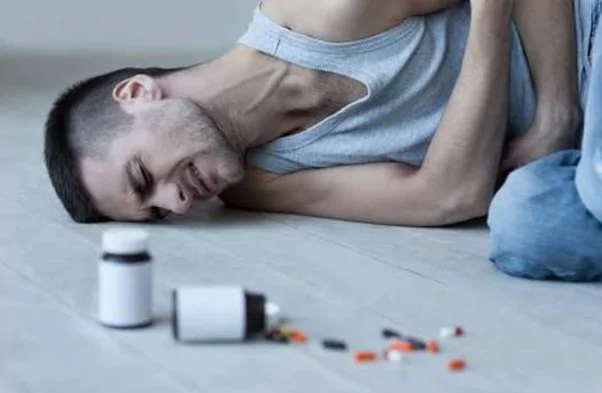Investigate the Best Practices and Support Systems for Effective Opioid Detox

Opioid dependence is a pressing issue that affects millions of individualities worldwide. prostrating this dependence involves numerous ways. Detoxing from opioids is the first step. This process is tough on the body and mind. It needs strong support systems to succeed. The stylish support styles and networks are necessary for a successful opioid detox. They have offered a clear plan for people going through this process and their loved ones.
What is Opioid Detox?
Opioid detoxification, or detox, is the process of clearing opioids from the body and managing pullout symptoms that arise when a person stops using these substances. The thing about detox is to safely and comfortably manage pullout symptoms to pave the way for long- term recovery.
Key Aspects of Opioid Detox
- Medical Supervision: Detox frequently takes place under medical supervision. This is to ensure safety and manage withdrawal symptoms. You can do this in numerous settings. For example, hospitals, detox centers, or outpatient programs.
- Withdrawal Symptoms: Withdrawal symptoms vary in inflexibility. They can include anxiety, muscle pangs, sweating, nausea, vomiting, diarrhea, and medicine cravings. In some cases, more serious symptoms can do. These include rapid-fire heart rate, high blood pressure, and seizures.
- Medications:Active judgment Certain medications can help ease withdrawal symptoms and reduce cravings.
- Duration: The detox process’s length varies. It depends on the opioid type, use duration, lozenge, and the person’s health. Withdrawal symptoms peak within a many days and end within a week. But, some symptoms, like cravings and cerebral ones, can last longer.
- Post-Detox Treatment: Detox is frequently the first step in a comprehensive treatment plan. Post-detox treatment might include therapy. This therapy could be individual or group. It might also include support groups and lifestyle changes. occasionally, it includes long- term medication- supported treatment. MAT helps keep it sober and helps relapse.
- Safety and Support: People in opioid detox need strong support. They should get it from healthcare providers, family, or support groups. This support helps them manage withdrawal and keep recovering.
The Importance of Medical Supervision
Opioid detox should ideally be conducted under medical supervision. Quitting opioids can cause severe symptoms. These include nausea, puking, diarrhea, and muscle pain. In some cases, complications can be life- hanging , making medical supervision pivotal.
Gradual Tapering
One of the safest styles for opioid detox is gradual tapering. In a gradual process, doctors gradually lower the opioid dose. This approach helps minimize withdrawal symptoms and reduces the threat of complications. Medical professionals can produce a tapering schedule acclimatized to the individual’s requirements.
Medication-Assisted Treatment (MAT)
MAT involves using medicines like methadone, buprenorphine, or naltrexone. These medicines manage pullout symptoms and reduce cravings. These details are pivotal for detox and long- term recovery. They help to stabilize the case and reduce the threat of relapse.
Methadone
Methadone is a long-acting opioid agonist. It can reduce pullout symptoms and jones without causing the same high as other opioids. It’s generally administered through a technical clinic.
Buprenorphine
Buprenorphine is a partial opioid agonist that can palliate pullout symptoms and jones . It has a lower threat of abuse and overdose compared to full agonists like methadone.
Naltrexone
Naltrexone is an opioid antagonist that blocks the goods of opioids. After detox it can be help prevent relapse by reducing to the ecstatic goods of opioids.
Hydration and Nutrition
Maintaining proper hydration and nutrition is vital during detox. pullout symptoms cause blankness and nutrient shortages. These can make discomfort worse and outstretch recovery. A balanced diet and acceptable fluid input can help palliate these symptoms.
Support Systems for Opioid Detox
Inpatient Detox Programs
Inpatient detox programs provide a structured and supervised place. They are for people going through opioid detox. These programs offer medical monitoring, support, and a range of services. They address the physical and mental aspects of pullout.
Outpatient Detox Programs
For those with the stable home or less severe dependence inpatient detox can help. These programs let people get medical supervision and support. They can do this while living at home and keeping their daily duties.
Counseling and Therapy
Comforting and remedy are pivotal factors of opioid detox and recovery. Therapies can help people understand why they are addicted. They can also help them develop coping strategies and deal with other health issues
Cognitive Behavioral Therapy (CBT)
CBT is a widely used remedy. It helps people find and change negative study patterns. These patterns are tied to their dependence. It can be particularly effective in precluding relapse and promoting long-term recovery.
Group Therapy
Group remedy provides a probative terrain. Here, people can share their stories. They can gain insight from others and build a community. It’s able to reduce passions of insulation and give precious peer support.
Family Support
Family participation transforms opioid detox and recovery results completely. Family members can provide emotional support. They can help create a stable situation. They can also join family therapy. It addresses relationship issues that may cause dependence.
Post-Detox Support
Continuing Care and Aftercare Programs
Detox is the first step to the recovery process. Continuing care and aftercare programs are essential for maintaining sobriety and preventing relapse. The programs may include ongoing treatment. They may also include support groups and regular check- sways with medical professionals.
Sober Living surroundings
Sober living homes offer a medicine-free place. They’re for people transitioning from detox to independent living. These surroundings offer structure, duty, and community. They’re crucial during early recovery.
Conclusion
Detox requires a full approach. It includes stylish ways for managing pullout and strong support for recovery. By understanding the various styles and supports, people can form informed opinions. They can do this about their detox and recovery trip. Recovery may involve medical supervision, medicine- grounded treatment, or family support. The right money and fidelity make the path to recovery easier. Detox is the first step to a healthier life. With the right support, lasting recovery is possible.





